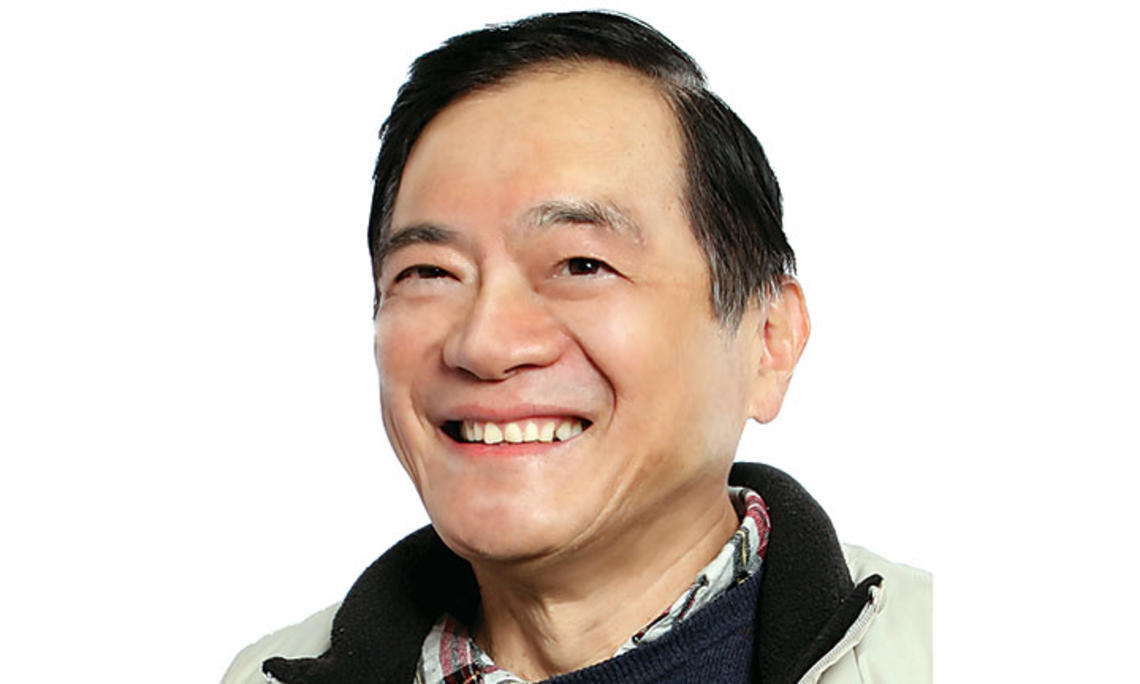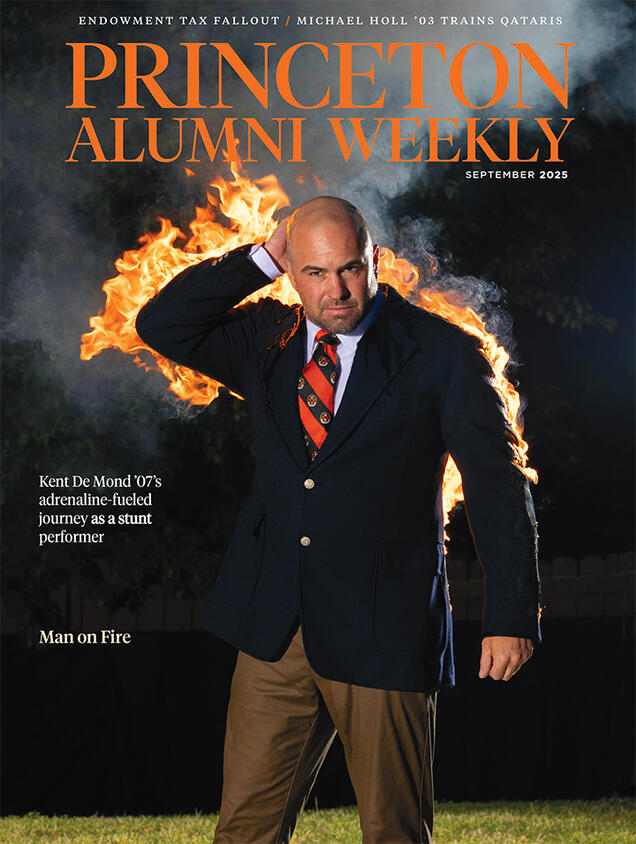
Tony Zee ’66 made an improbable journey from China to Brazil and eventually to Princeton, where he studied physics under the tutelage of legendary professor John Wheeler.
PAW Tracks is also available on iTunes — click here to subscribe
TRANSCRIPT
Brett Tomlinson: Welcome to the third season of PAW Tracks, an oral history podcast from the Princeton Alumni Weekly. When each print issue of the magazine is released, we’ll be sharing a story from an alum.
We begin with Tony Zee, Class of 1966. He grew up in a family that valued education, and he made an improbable journey to Princeton from a tiny high school in Saõ Paulo, Brazil.
Tony Zee: My name is Tony Zee, Class of 1966, and I was born in China, but my family immigrated to Brazil. When the Communists took over China, my father had the foresight to leave. If he didn’t leave, my life would have been totally different. I mean, I could be carrying rocks in the countryside somewhere, particularly given my family background.
My father had been a businessman, and [in] my mother’s family was some government official. So my cousins and so on — they were all punished by the regime. So I am not joking when I said that I would be carrying rocks in the countryside because that’s exactly what some of my cousins did.
When we immigrated to Brazil, we took a ship, which was essentially a cargo ship. It was a 50-day journey from Hong Kong to Brazil, going through India and Africa and so on. And it was an eye-opener for me. I think that was one of the best educations I had.
But the most important thing was that my mother was worried that there would be no schools in Brazil and so on, so she went and bought a whole bunch of books — math books, physics books, history books, literature books.
When we were in Brazil I remember when I was in high school my father, he used to say that the Communist could take everything away from us, but the one thing he cannot take away from us is education. And by education, of course, he wanted the best for his children, and the best at that time would be an American education, an American degree. So although financially he was really struggling when he first got to Brazil, essentially penniless, he sent me to an American school, which was quite expensive by the standards of that time.
It was an American international school, and academically, that school was, I guess by modern standards would be extremely weak. There was no physics course — I didn’t take a physics course, for example. Academically, I excelled at this school, and in fact some of the teachers didn’t want me to be a distracting presence in the classroom, so they sent me off to the library to sit on my own and to read. So my father didn’t know. I guess I never told him that he was paying this extremely high tuition, for his financial situation, so that his son could sit in the library and read books on his own.
But anyway, I did very well academically. Now, why Princeton? Obviously the teachers at this school, who were all American, they wrote me very good letters of recommendation. And the other thing that I remember very clearly was that I applied to a bunch of schools, but Princeton was especially attractive to me because there was a physicist named George Gamow, who wrote popular books for the general public, and in his book, he particularly talked about Professor John Wheeler at Princeton, who thought the atomic nucleus had the shape of a doughnut. So this really fascinated me, as you can imagine — a high school kid who’s never had a physics course. That was one of the reasons I wanted to go to Princeton, and in fact it all worked out. Princeton offered me a full scholarship, and I did get to work for John Wheeler.
When I got accepted into Princeton, it was almost an astonishing surprise. In that period, as you probably know, there were very few Asians here, and maybe in my class of 800-and-something, there were something like less than 10. I was going to study physics, but my very first day here, I ran into some of my classmates who were going to study physics. And I don't know if they still do that at Princeton, but the first thing they did was they tried to intimidate me by telling me how much they knew and how little I knew. So that was interesting because now I’m a professor of physics, and I’m one of the few people in my class that have actually gone into academic physics.
I think it was University policy, though I’m not actually sure, at that time to put incoming foreign students like me — I don’t know if it was every foreign student or just me or only for Chinese teenagers from Brazil — I was thrown in with a junior. As I recall his name was Michael Kober, and he was a football player on the football team. So the two of us were quite a mismatch. He’s a giant big guy, and I’m not that big, certainly not big enough for the football team. But he was very nice. I think he was a volunteer for this program, to take care of foreign students and get them oriented or something.
John Wheeler was going to give a special course that year, and he had a special quiz to sort of select the students. All the freshmen were in the room, and he would ask us a question, all yes or no questions. If we answered one yes, we’d go to one side of the room, no would go to the other side. And that was how he selected people. All the people who ended up in one corner of the room, those were the people that got into his class. And the rest were sent to the regular physics course. But his physics course was a disaster, so it was only tried for one year. He wanted to teach physics in a nontraditional way, and totally upside down. So he wanted, for example, to teach us Einstein’s relativity first and then derive Newtonian mechanics as a limit.
The first lecture, and the first class, I still remember the assignment very well. The assignment was very unusual. He came into the room and he wrote down the address [110 Mercer Street], and that was where Einstein used to live, as most Princetonians know. And the assignment was to walk over to Mercer Street and stand in front of Einstein’s house for five minutes. That’s a wonderful physics assignment for a first class!
BT: Zee got to know Wheeler quite well in his four years at Princeton, and the professor helped him secure a spot in the graduate physics program at Harvard, where he would earn his Ph.D. Today, Zee is a professor of theoretical physics at the University of California, Santa Barbara.
Brett Tomlinson produced this episode. The music is licensed from FirstCom Music.
Tony Zee came to our oral history project at Reunions because he met one of our other participants in an elevator in Blair Hall. And, as you just heard, he had a great Princeton story to tell. So if you have a story you’d like to share, let this be that chance meeting in the elevator: Email us at paw@princeton.edu to set up an interview for PAW Tracks. We’d love to hear from you.
Also, if you’re new to the podcast, please check out our past episodes. If you’re listening on the PAW website, you can click the PAW Tracks hashtag at the bottom of the transcript. You also can listen to all 29 episodes on iTunes.
Paw in print

September 2025
Stuntman Kent De Mond ’07 is on fire; Endowment tax fallout; Pilot Michael Holl ’03 trains Qataris

1 Response
Jim Parmentier ’66
8 Years AgoTony is really one of the...
Tony is really one of the academic “Stars of ’66.” I downloaded a podcast of a three-lecture series entitled “Back-of-the-Envelope Calculations” that he presented as a guest lecturer about a decade ago at the University of Capetown, in South Africa. I listen to them when I run. It is my firm belief that, if I listen to them enough times, I’ll eventually understand basic physics.